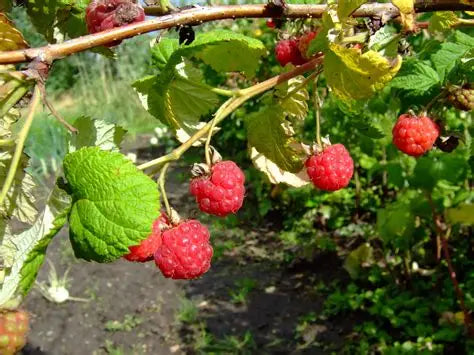Riverdene Garden Centre
Boyne Raspberry
Boyne Raspberry
Couldn't load pickup availability
Overview
-
Botanical Name: Rubus idaeus ‘Boyne’ (summer‑bearing red raspberry)
-
Common Name: Boyne Raspberry
-
Hardiness: Suitable for Zone 3 and up.
-
Origin: Canadian‑bred cultivar, developed for cold‑climate performance.
-
Crop Type: Summer‑bearing (produces on last year’s canes or floricanes)
-
Typical Size: About 4‑6 ft tall (120‑180 cm) and 2‑3 ft wide (60‑90 cm).
-
Fruit: Medium‑sized deep red raspberries, sweet flavoured, good fresh, for freezing/preserves.
Site & Soil Requirements
-
Sunlight: Full sun is best. While some light shade is tolerated, yield or berry size may reduce.
-
Soil: Well‑drained, moist but not waterlogged. Avoid heavy clay or shallow chalky soils. Slightly acidic to neutral is preferred (pH ~5.8–6.5)
-
Wind & Shelter: In colder prairie conditions, a sheltered site helps reduce cane desiccation/winter damage.
Planting & Spacing
-
When to plant: Early spring when soil is workable (or dormant plants).
-
Spacing: Set canes about 2‑3 ft apart in the row with additional space between rows as required.
-
Planting depth: Plant so the crown is just at or slightly below soil level. After care: water well to settle soil.
-
Support: Summer‑bearing raspberries benefit from trellising or support to keep canes upright for ease of picking and airflow.
Care Through the Season
-
Watering: During the active growth and fruiting period aim for about 1″ (2.5 cm) of water per week, more if conditions are dry.
-
Weeding & Mulch: Mulch around base to retain moisture and suppress weeds. Keep planting area free of competing weeds.
-
Fertilizing: Prior to planting incorporate organic matter. Annually, a light top‑dress of compost or balanced fertilizer in spring is helpful.
Pruning & Winter Care
-
After fruiting: Since Boyne bears on second‑year canes (floricanes), remove the canes that fruited right after the harvest to make room for next year’s growth.
-
Thinning: In early spring or late winter, thin out weak or damaged canes. Leave the strongest ~4‑5 canes per metre (or equivalent spacing).
-
Winter protection: In very exposed or windy Zone 3 sites, reduce late summer watering, avoid excessive late growth and consider mulch or snow cover to protect base of canes.
Pests & Diseases
-
Common pests: Aphids, mites, raspberry leaf & bud mite, raspberry beetle.
-
Common diseases: Cane blights, rusts, root rot in poorly drained soils. Good site selection + cane removal helps.
-
Best prevention: Good air circulation, proper spacing, remove old canes, avoid overcrowded or waterlogged beds.
Photo from Prairie Gardens
Share


